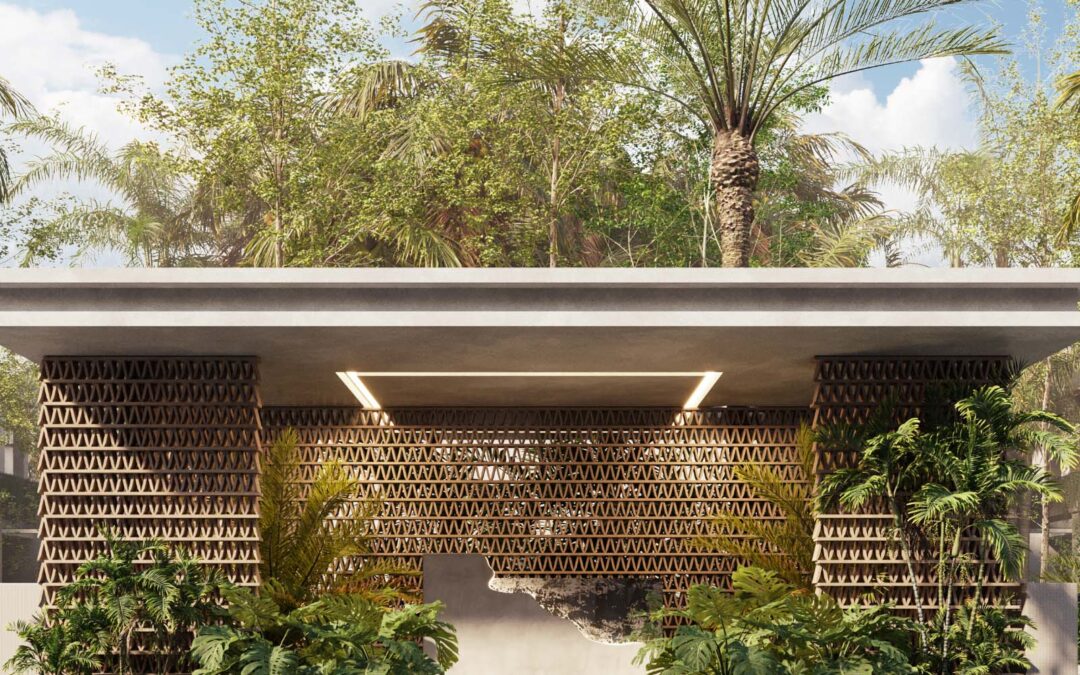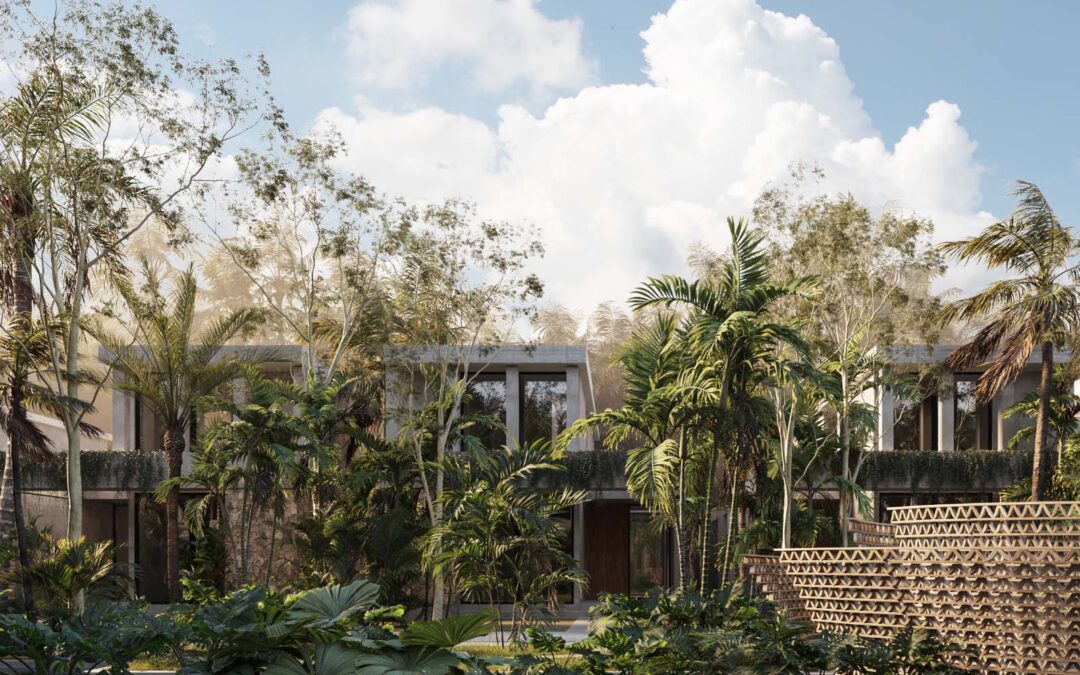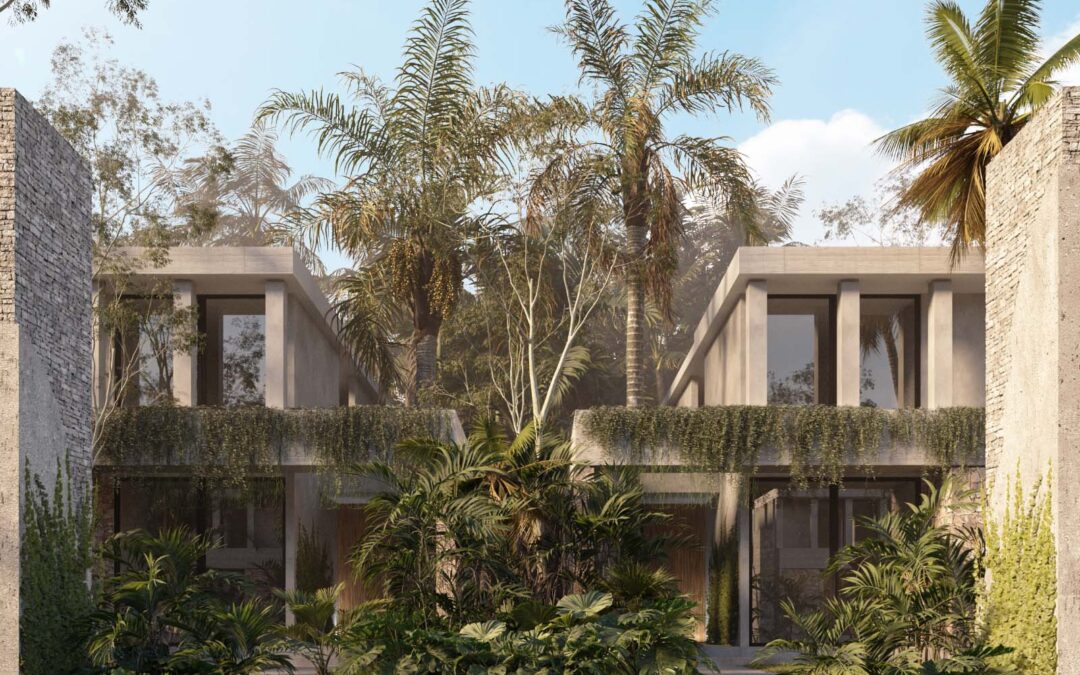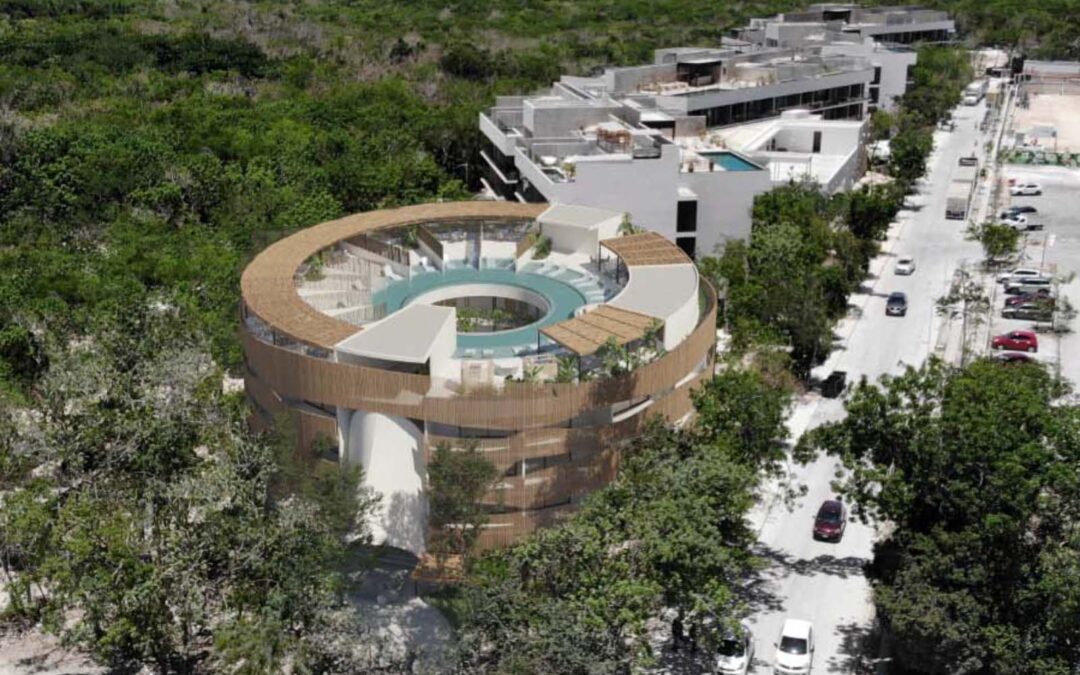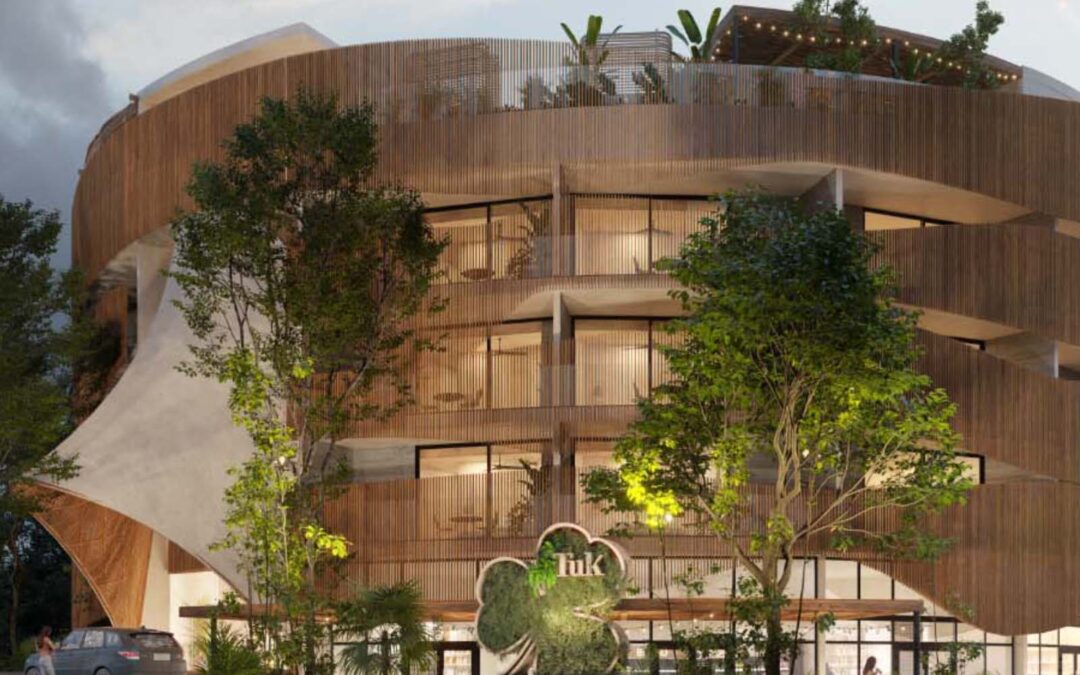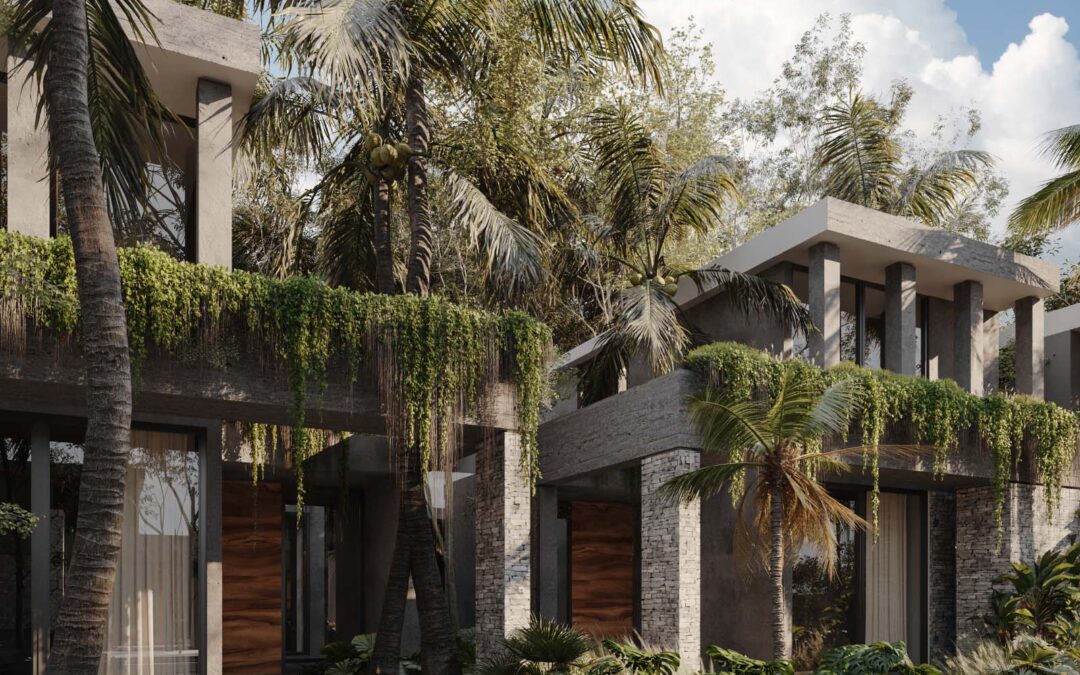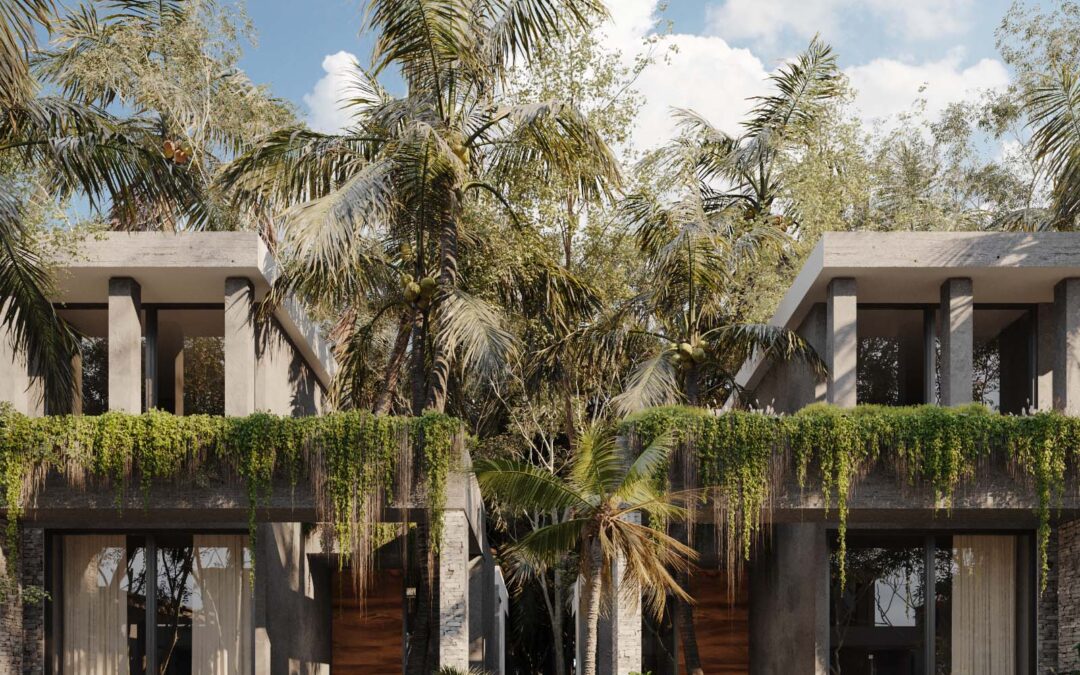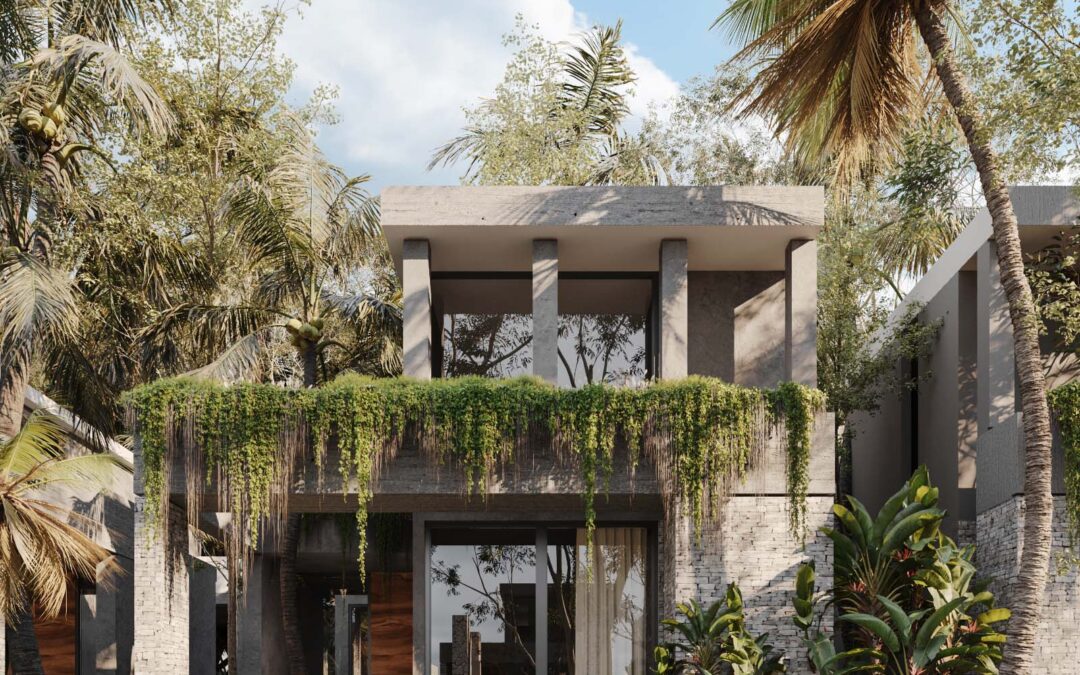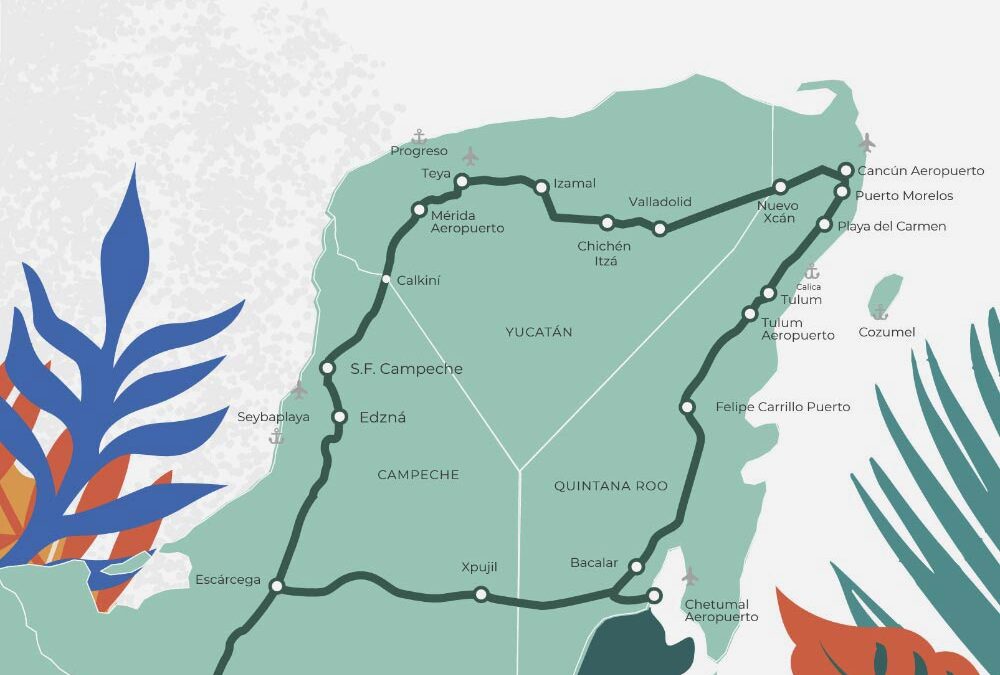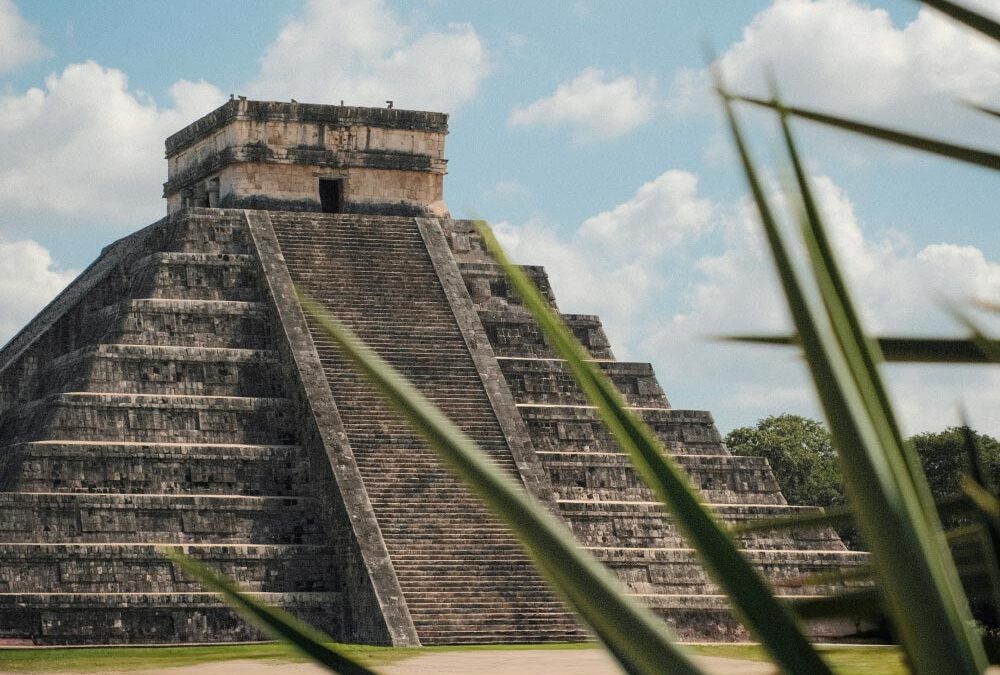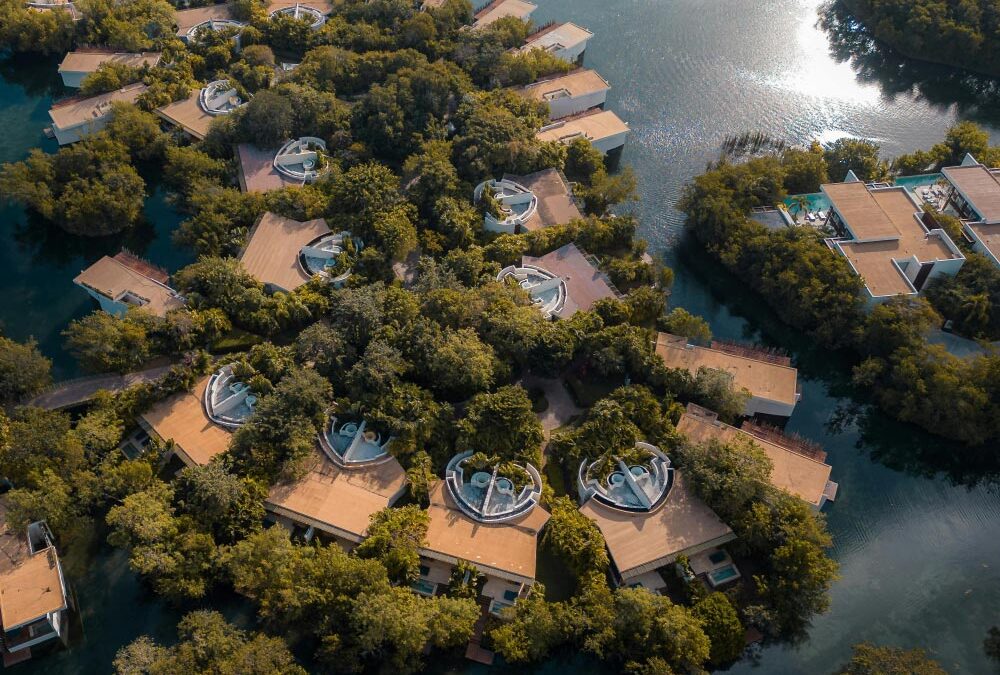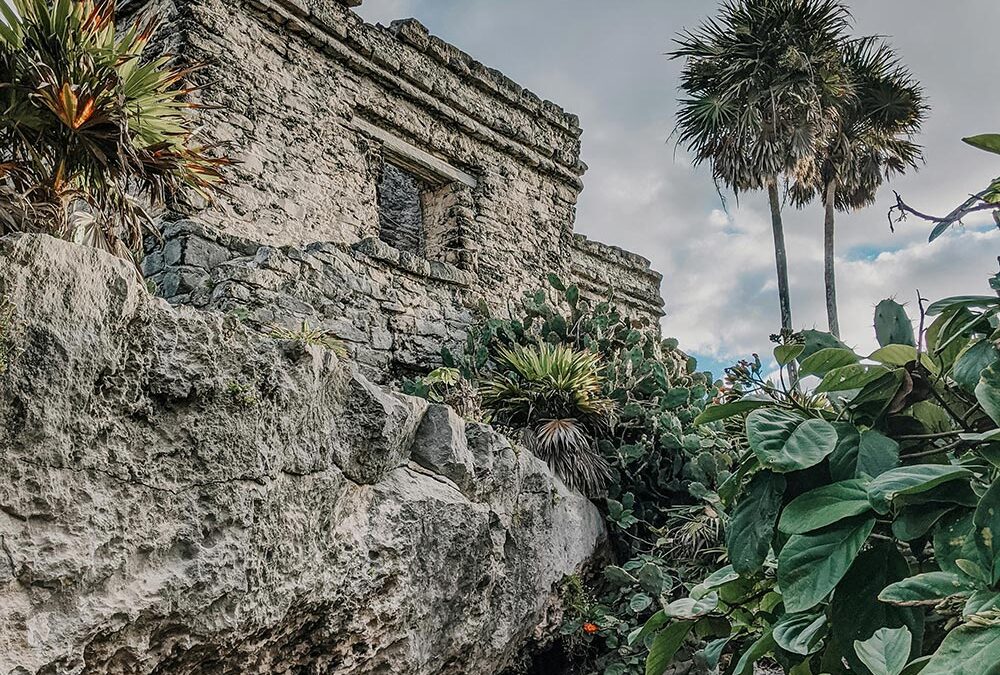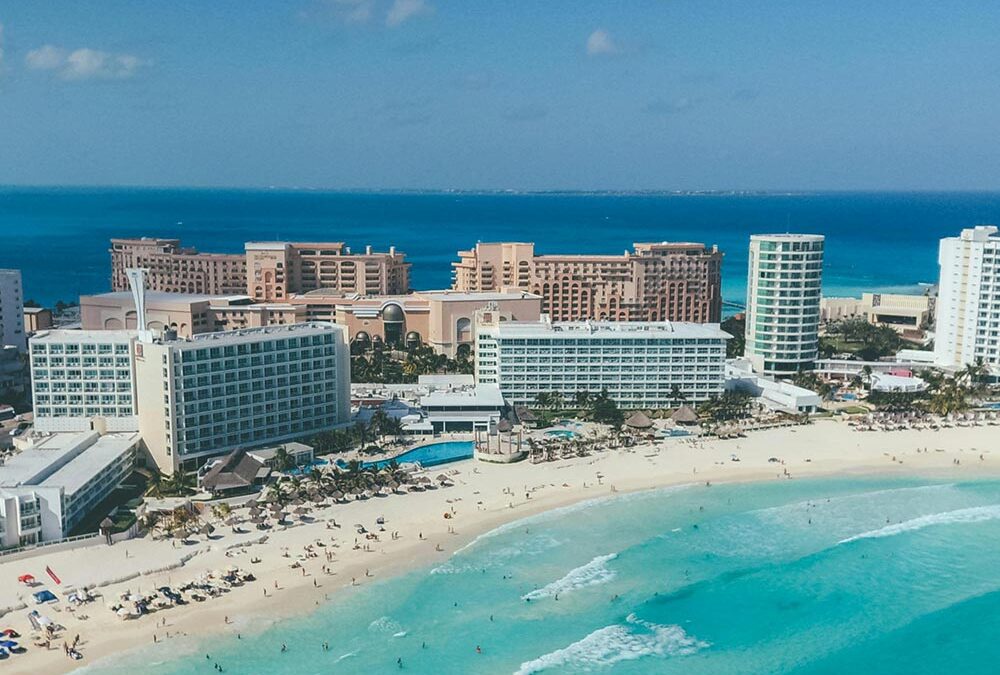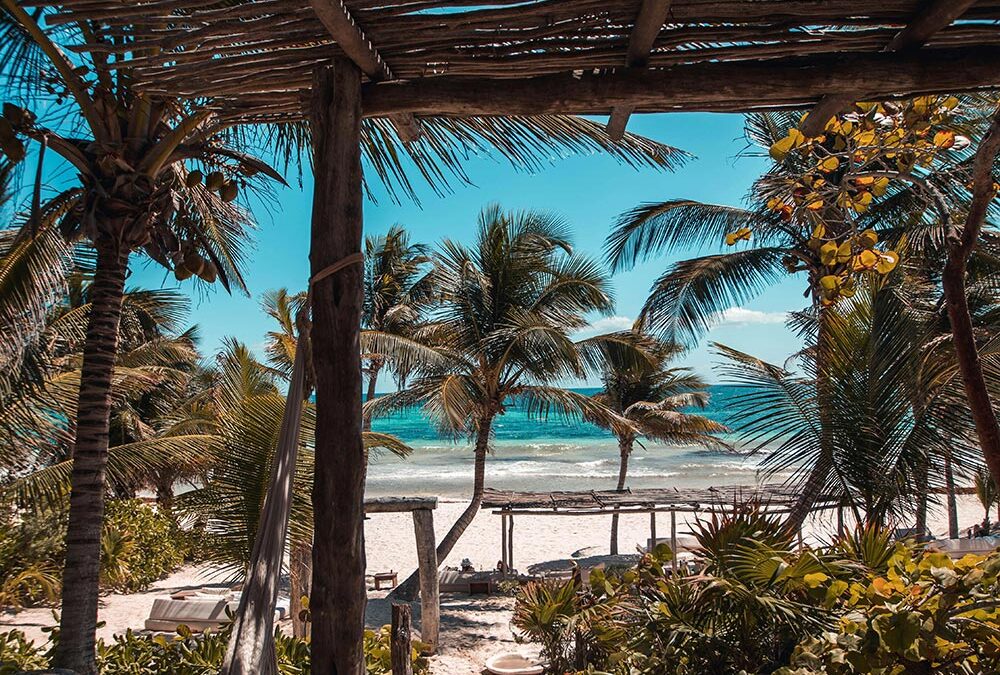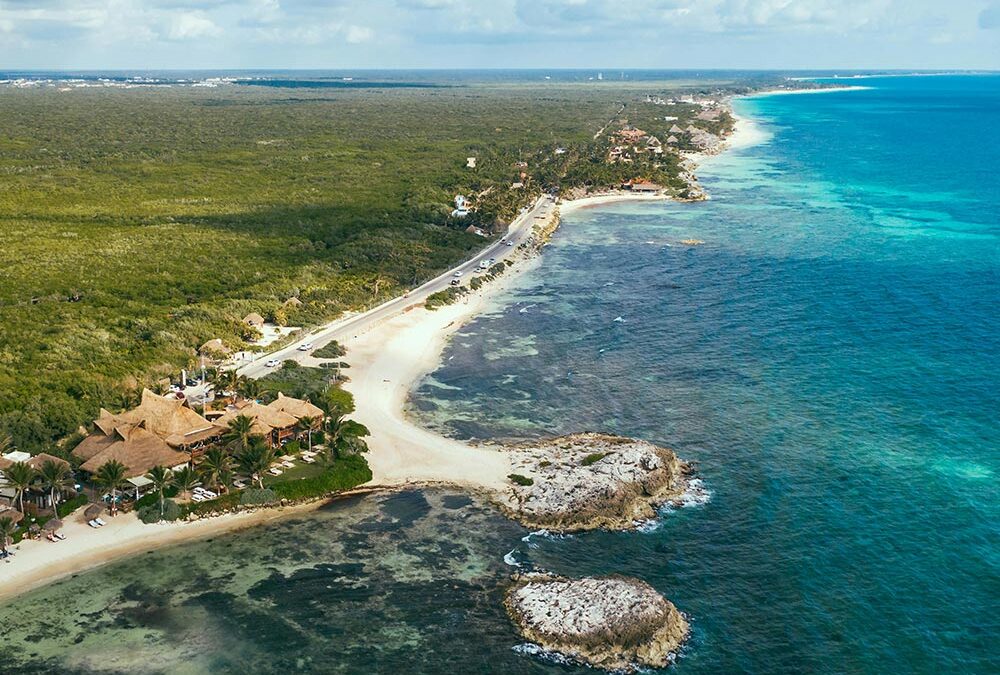Throughout history, gold has stood out as a favored store of value during times of uncertainty—praised for its ability to hedge against inflation and maintain purchasing power. While gold can indeed protect wealth in turbulent markets, it offers few opportunities to actively grow that capital. Real estate, on the other hand, presents investors with an asset that not only maintains value but also generates ongoing income and has significant growth potential. The result? A pathway to build wealth more dynamically than simply holding precious metals.
In recent years, one particular corner of the global real estate market has stolen the spotlight: Tulum, a burgeoning destination on Mexico’s picturesque Caribbean coast. Known for its eco-friendly developments, luxurious amenities, and a strong tourism sector, Tulum real estate demonstrates exactly why property investing can outshine gold in wealth creation. Unlike gold’s static nature, Tulum properties can yield robust rental revenue, benefit from annual appreciation, and serve as tangible assets you can optimize and improve over time.
This article will explore the fundamental differences between gold and real estate, illustrating how Tulum’s property market exemplifies the value of active income streams and long-term growth. Through in-depth analysis, data-driven perspectives, and a real-world case study, you’ll discover why real estate, especially in a high-demand locale like Tulum, stands poised to surpass gold in fostering genuine, lasting wealth.
Index of Content
- Real Estate vs. Gold: A Fundamental Comparison
- Why Tulum? Understanding a Booming Market
- Active Income Streams: Rental Yields and Beyond
- Long-Term Appreciation: The Power of Property Growth
- Risk Mitigation and Market Resilience
- Financing Models and Potential Returns
- Conclusion
- Case Study
- FAQs
Real Estate vs. Gold: A Fundamental Comparison
Passive Storage vs. Active Wealth Building
Gold’s appeal originates from its historical use as a universal currency. Yet, its core strength—remaining valuable over time—is simultaneously its principal limitation. Gold does not deliver steady income. It sits in vaults or is held in exchange-traded funds (ETFs), with owners hoping the price will rise. Although gold often spikes when equities falter, it can stagnate in calmer economic periods, providing no dividends or rental revenue. Investors are completely reliant on price appreciation, which may occur slowly or unpredictably.
In contrast, real estate stands out because it can earn ongoing revenue and appreciate in value simultaneously. Property owners benefit from rental income, allowing them to gradually recoup their investment while waiting for the property’s market value to rise. This process transforms the asset into a dynamic wealth generator rather than a static store of value. Whereas gold owners monitor daily spot prices, real estate investors can actively enhance their assets through renovations, strategic marketing, or superior management, all of which can drive higher returns and greater long-term gains.
Moreover, real estate can be bought with leverage, whereby a down payment and mortgage unlock access to a high-value asset. Gold, on the other hand, typically requires a full capital outlay if bought physically, offering less potential for amplified gains from appreciation. While leveraging can carry risks, a carefully structured real estate loan can increase overall ROI, mitigate currency exposure, and diversify financial obligations, an option often absent in gold investments.
- Well-managed properties can increase in worth through improvements and sustained market demand—unique advantages that gold lacks.
Why Tulum? Understanding a Booming Market
Tourism, Eco-Luxury, and Global Appeal
Tulum, situated on Mexico’s Yucatán Peninsula, has surged in popularity over the past decade, earning a reputation as an eco-luxury hotspot. From pristine beaches and cenotes to chic boutiques and world-class restaurants, Tulum attracts a globally diverse crowd of vacationers, expats, and digital nomads. This influx of visitors naturally fuels the real estate sector, as both short-term vacationers and long-term relocators seek high-quality housing options.
The Mexican government and private developers have responded to Tulum’s rising profile with infrastructure projects, improved transportation, and regulations emphasizing sustainable construction. As a result, investors are greeted with a well-structured market that balances environmental preservation with economic growth. This synergy makes Tulum’s real estate not merely stable but also replete with ongoing opportunity for expansion—justifying confidence in future price appreciation.
According to local agencies, Tulum has witnessed average real estate appreciation rates between 8% and 15% annually in prime locations over recent years. While gold can sometimes produce double-digit returns during brief, intense rallies, its long-term average is often more tempered. Tulum’s consistent growth aligns well with a ‘buy-and-hold’ strategy, enabling investors to enjoy cash flow from rentals while they wait for property values to climb.
Infrastructure Projects and Community Development
Investors looking for an edge often track upcoming infrastructure developments, which can elevate real estate values. Tulum stands on the brink of major enhancements, like the planned Tulum International Airport and expansions of highways linking Tulum to other major towns and tourist centers. These projects are expected to reduce travel times, improve logistics, and draw even larger tourist numbers to the area. Meanwhile, municipal initiatives centered on eco-friendly growth—like waste reduction and water conservation programs—continue to solidify Tulum’s reputation for sustainable tourism.
- Monitor planned infrastructure in Tulum—airport expansions, highway updates, and eco-initiatives can drive property values significantly higher.
Active Income Streams: Rental Yields and Beyond
Tapping into Short-Term Rentals
Unlike gold, which generates zero income until sold, Tulum real estate can produce a reliable revenue stream via rental programs. Short-term vacation rentals have become an increasingly lucrative model, especially in popular destinations like Tulum. Tech-savvy travelers frequently use online platforms (e.g., Airbnb, Vrbo) to book unique, stylish accommodations. Occupancy rates can average between 60% and 80% throughout the year, peaking during high season (December to April) with nightly rents often ranging from $150 to $500, depending on property size, location, and amenities.
These healthy rental yields can swiftly offset ongoing expenses like property management fees, mortgage payments, and maintenance costs. Even considering conservative occupancy scenarios, many Tulum investors report net rental returns in the 5% to 10% range annually, all while they retain the underlying asset. In essence, Tulum real estate transforms a static store of value—akin to gold—into a consistent, monthly income producer that simultaneously appreciates in worth. This cash flow advantage underpins why real estate is frequently regarded as more effective at building wealth.
Leveraging Long-Term Leases
While Tulum is best known for its vibrant tourism market, the city also attracts a steady number of long-term renters including retirees, remote workers, and locals employed in the growing hospitality industry. Signing annual or multi-year leases appeals to landlords seeking lower tenant turnover and consistent monthly payments. With Tulum’s rising stature as an international destination, tenants look for quality accommodations that offer good internet connectivity, modern amenities, and convenient access to local services.
This long-term rental approach can reduce management overhead, as landlords spend less time marketing the property and coordinating frequent cleanings. Though long-term rates are generally lower than short-term vacation prices, the guarantee of occupancy and predictable cash flow appeals to investors looking for a stable, less volatile income stream. By contrast, gold owners remain passive observers, unable to influence their asset’s performance or boost returns.
- Blend short-term rentals in peak season with longer leases to reduce vacancy risk and stabilize overall cash flow.
Long-Term Appreciation: The Power of Property Growth
Sustained Demand and Scarcity
Gold’s enduring strength lies in its scarcity and global acceptance. However, Tulum real estate boasts a similar scarcity factor with the added benefit of tangibility and utility. The local government imposes development regulations to preserve Tulum’s ecosystems, limiting the quantity of new buildings, especially near the coast. As demand for prime locations grows, constrained supply can push property values even higher over time.
Real estate also appreciates through market forces such as population growth, rising tourism, and infrastructural advancements. In Tulum, these elements converge in a potent formula for ongoing price appreciation. Ecosystem and heritage preservation not only protect Tulum’s charm but also increase the exclusivity (and value) of properties. Thus, while gold relies heavily on external economic conditions to drive up prices, Tulum’s real estate fosters its own upward momentum via location-specific advantages, a robust tourism pipeline, and environmental stewardship policies.
Improving the Asset for Greater Returns
Perhaps one of the strongest arguments for real estate as a wealth-building vehicle is the ability to improve the asset itself. By renovating kitchens, adding sustainable features like solar panels, or upgrading interior designs to reflect Tulum’s eco-chic style, owners can enhance both rental potential and market value. The result? A direct, controllable pathway to amplify returns—an attribute gold simply cannot emulate. You cannot “upgrade” a bar of gold to command a higher sale price beyond the global spot value.
Furthermore, owners can tailor their properties to evolving market trends. If Tulum’s tourism culture shifts toward wellness travel or experiences that promote nature immersion, property owners can adapt by adding spa-like facilities, open-air living spaces, or energy-efficient cooling systems. These strategic adjustments unlock higher rental rates and keep the property appealing in a competitive market, again offering a dimension of active wealth-building far beyond gold’s static nature.
- Periodic property upgrades—green roofs, landscaping, or smart home tech—can drive substantial increases in nightly rental fees and resale value.
Risk Mitigation and Market Resilience
Weathering Global Economic Shifts
Both gold and real estate are considered “safe-haven” assets during economic turbulence. However, gold’s value often hinges on broader economic events—central bank policies, inflation rates, or geopolitical tensions—that can dramatically shift investor sentiment within days. Real estate markets, by contrast, typically respond more gradually, with property values adjusting over months or years. This slower pace can provide a measure of stability for those wary of fast-moving markets.
Tulum’s real estate market offers further resilience through its diversified tourism base. It welcomes visitors from North America, Europe, and increasingly Asia, mitigating reliance on any single region’s economy. Even when global travel declined during recent global challenges, Tulum rebounded faster than many crowded tourist cities, owing to its outdoor-focused experiences and boutique lodging options. This capacity to recover relatively quickly underscores the local market’s robustness and lowers the likelihood of abrupt, severe price collapses that gold can occasionally undergo after periods of intense speculation.
Legal Protections and Community Support
Foreign investors sometimes question the legal frameworks governing property ownership in Mexico, especially in coastal zones. However, Mexico allows foreigners to buy beachfront properties via a bank trust known as a fideicomiso, a safe and legally recognized method for securing full ownership rights. Reputable developers and real estate agencies in Tulum work closely with legal experts to simplify this process, providing clarity and confidence to foreign buyers. This supportive environment stands in stark contrast to gold ownership, where security and authenticity verification can be complicated without specialized vault services or third-party certificates.
- Engage bilingual attorneys and established brokerages to safeguard property transactions, from title checks to zoning verifications.
Financing Models and Potential Returns
Developer Financing and Mortgage Options
A significant advantage of real estate over gold is the availability of financing structures. While gold buyers often must pay the full purchase price upfront, Tulum property investors can choose from various mortgage products or developer financing plans. Pre-construction deals typically offer extended payment schedules and reduced interest rates during the building phase, easing the burden of large lump-sum payments. Some buyers secure cross-border mortgages or loans from local Mexican banks, with interest rates often ranging from 5% to 9%, depending on the investor’s credit profile and loan duration.
This leverage amplifies overall ROI. A 30% down payment, for instance, can give you control of a property that may appreciate and generate rental income on the entire asset’s value. As long as rental revenue covers (or exceeds) mortgage obligations and operational expenses, your leveraged returns can significantly outpace what you’d achieve from a fully cash-funded investment—or from holding gold, which yields no ongoing cash flow. Properly structured real estate financing can thus turn a medium-sized capital pool into an expanding property portfolio, whereas with gold, you are typically limited to the quantity you can afford outright.
Projected Returns in Tulum vs. Gold
Estimating potential returns depends on multiple factors, from local tourism trends to broader market shifts. Nevertheless, Tulum real estate has historically provided a compelling combination of capital growth and rental income. Many investors have reported total annual returns (appreciation plus rental cash flow) in the 15% to 20% range for well-located or pre-construction assets over a 3- to 5-year horizon. Of course, individual results vary based on property management and market timing, but Tulum’s fundamentals—tourism demand, controlled development, and brand appeal—create a strong foundation for consistent gains.
Gold, by comparison, may experience bursts of double-digit price hikes when economic fears escalate. However, these spikes often recede when investor sentiment shifts, leaving gold prices stagnant or in decline for extended periods. Long-term charts reveal a more moderate average annual growth rate for gold, typically below 10%. Consequently, while gold may be a protective asset in times of crisis, it tends to underperform real estate when measured over multiple market cycles—especially when you factor in real estate’s continuous cash flow and the ability to force appreciation through property improvements.
Conclusion
While gold and real estate can both hedge against market volatility, Tulum real estate stands out as a dynamic, multi-faceted investment capable of generating active income and long-term capital appreciation. Gold may serve as a steady store of value—but it cannot match the practical utility, controlled leverage, and direct revenue possibilities that come with owning property. In Tulum, these benefits are magnified by the region’s soaring tourism numbers, restricted supply of buildable land, and strong brand appeal, driving sustained growth for savvy investors.
By carefully selecting properties—be it a beachfront condo or a stylish villa—investors tap into multiple wealth-building components: rental income, property improvements, long-term price appreciation, and potential tax advantages through mortgage interest deductions. Gold, though undeniably enduring, remains a passive asset susceptible to market sentiment. Real estate, especially in Tulum, offers a more active route to wealth creation, allowing owners to shape their investment’s performance by leveraging local market trends, property enhancements, and strategic rental operations.
Ultimately, deciding between real estate and gold depends on your risk tolerance, investment objectives, and desired level of involvement. If you seek a tangible, income-generating asset that can appreciate steadily over time and flourish amid real-world demand, Tulum real estate presents a compelling case. Whether you’re diversifying a larger portfolio or making a first foray into property investment, Tulum’s thriving landscape proves time and again that real estate can outshine gold in the quest for sustained wealth.
Case Study: Transitioning from Gold to Tulum Properties
Consider the story of Lucia, a 50-year-old entrepreneur from Canada who held a significant portion of her portfolio in gold. While gold offered her peace of mind as a hedge against inflation, she found it lacking as a source of growth. Hearing about Tulum’s potential, Lucia sold part of her gold holdings and invested in a pre-construction condo near Aldea Zamá for approximately $200,000. The developer allowed a payment schedule of 40% down over the construction timeline, with zero interest during that period.
Within 18 months, her condo was completed—by which time its appraised value had risen to $250,000, a 25% appreciation. Upon listing it on a short-term rental platform, Lucia achieved roughly 65% occupancy during the first six months, netting a 7% annual return from rents alone. Compared to her remaining gold holdings, which had barely moved in price over the same period, her real estate investment delivered consistent income and locked-in equity gains. She now plans to reinvest her rental profits into additional Tulum properties, building a small portfolio aimed at generating ongoing monthly revenue—a feat gold simply could not provide.
FAQs
1. Is Tulum real estate too risky compared to gold?
All investments carry risk, but Tulum’s strong tourism demand, infrastructure improvements, and brand appeal create sustained market drivers that reduce volatility. Comprehensive due diligence—hiring local experts, verifying developer reputations, and using legal professionals—can significantly mitigate risks.
2. How quickly can I start earning from a Tulum property?
Once the property is complete and furnished, you can begin listing it on short-term rental platforms almost immediately. Properties in prime locations can see bookings within weeks, allowing you to earn income relatively fast.
3. What if the global economy cools and tourism declines?
Tulum’s unique focus on eco-luxury and boutique experiences often mitigates massive tourism slumps. Furthermore, you can target longer-term renters—like digital nomads—to maintain occupancy if short-term travel dips. Real estate also adjusts more gradually to downturns compared to volatile gold price swings.
4. Do I need to be a Mexican citizen to buy real estate in Tulum?
No. Foreigners can legally own property in Tulum through a bank trust known as a fideicomiso. This structure grants full ownership rights while complying with Mexico’s regulations regarding coastal property purchases.
5. What are typical annual returns compared to gold?
While gold might average below 10% growth annually (and often pays no yield), Tulum real estate can yield net rental returns of 5–10% alongside property appreciation of 8–15%. Overall, many investors achieve total annual returns of 15% or more, surpassing what gold historically delivers.


